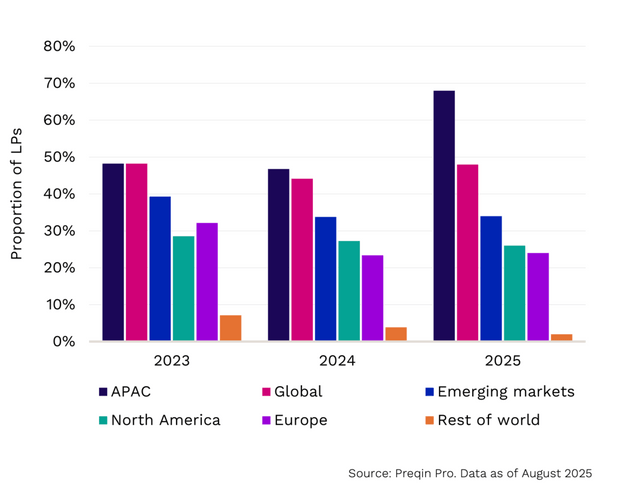The rapid growth of family offices in Southeast Asia, particularly in Singapore, is set to drive growth in private equity and venture capital investments in the Asia Pacific in 2026.
Southeast Asia-based allocators surveyed recently by private markets data company Preqin have indicated a strong preference for PE-VC investments, with the asset class emerging as the top choice for investors in 2025.
The top strategies targeted this year were venture capital, followed by buyout, growth, and secondaries. In fact, more investors have indicated their interest in committing to VC, buyout, and secondaries strategies than in the previous two years. Other strategies of interest include co-investments, fund-of-funds, and direct secondaries.

Notably, investors in Southeast Asia also expressed a much greater interest in Asia Pacific (excluding emerging markets) PE-VC investments, compared to the previous two years.

According to Preqin’s report, a significant proportion of these limited partners are non-institutional investors based in Southeast Asia, such as family offices and wealth managers. Non-institutional investors represent almost half of active private capital and hedge fund investors in Southeast Asia tracked by Preqin.
That is up from about a third in 2020, driven by the rapid growth of family offices, particularly in Singapore, where progressive regulations and tax incentives have attracted investors. The city-state is now home to 84% of Southeast Asia-based family offices.
This higher interest in PE-VC investments in the Asia Pacific comes as DealStreetAsia research shows how LPs remained circumspect, as reflected in the fundraising numbers at funds and startups in Southeast Asia in the first half of this year. Investors have stayed on the sidelines amid a lower tolerance for risk in a more uncertain environment, and with many having been burned in earlier ventures.
However, there are signs that activity could pick up by the end of the year. And, as noted in DealStreetAsia’s review of Southeast Asia PE funds in H1 2025, funds with a diversified mandate across the region continued to attract the most investor interest.



